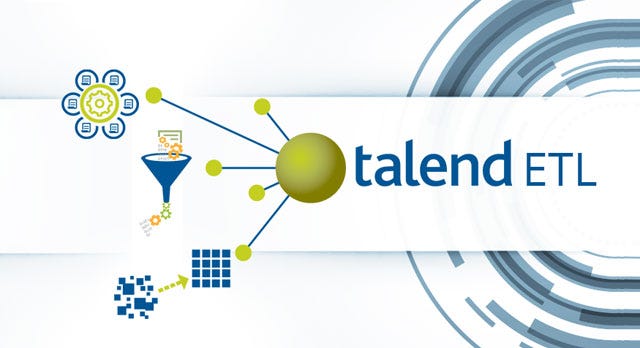Data Integration Tools: Which one to choose in 2024?


Picking the perfect Data Integration tools can be challenging. If you jump in without the proper knowledge, you might end up with a device that doesn’t fit your needs. Knowing critical details about these tools can guide you to the right pick.
In this guide, you’ll learn how to pinpoint the Data Integration Tool that matches all your needs. Plus, we’ll highlight the crucial factors to consider during your selection. Ready to dive in?
| On-premise Tools | These tools are tailored for those who have their data sources locally. Ideal for integrating data within your network, they can be set up either in a private cloud or directly within your local network infrastructure. They come with specialized connectors that make batch loading from multiple sources a breeze. |
| Cloud-based Tools | These are the go-to solutions for modern businesses moving towards a digital-first approach. As the name suggests, they operate online and can effortlessly bring together data from varied sources, storing the integrated result in an online repository. The biggest advantage? Accessibility from anywhere, as long as you have an internet connection. |
| Open-source Tools | Open-source tools are the gold standard for techies who love hands-on control and customization. Not only do they keep costs in check by avoiding expensive software licenses, but they also offer the flexibility to tweak and modify as per unique requirements. Remember, with great power comes great responsibility. So, ensure you have the expertise to manage and maintain these tools in-house. |
| Proprietary Tools | These are specialized solutions, often designed with specific business scenarios in mind. While they come at a cost, they offer robust features and dedicated support. If you have niche needs or require a seamless, hassle-free experience, proprietary tools can be a worthwhile investment. |
Informatica Cloud’s integration tool lets you pull in, merge, and clean up data using their cloud-based system. You can easily connect different data sources thanks to a wide range of connectors that understand the data’s details, simplifying intricate data tasks.

Informatica
Pros:
Cons:
Pricing: The base plan for Integration Cloud starts at $2,000 monthly. They don’t openly share prices for higher tiers. But there’s a 30-day free trial for many of their offerings.
Talend Integration Cloud gives you a secure platform to combine all your data from both the cloud and on-site. With Talend, you’ll benefit from user-friendly tools, pre-built integration templates, and an extensive component library. This means you can trust the data you’re handling, with Talend Cloud’s suite ensuring top-tier data quality.

Talend
Pros:
Cons:
Pricing: $1,170 per user each month or $12,000 annually.
Jitterbit is all about harnessing APIs, integration, and AI to drive forward-thinking solutions for users like you. Connecting SaaS, in-house, and cloud applications becomes a breeze with their platform. Plus, you can add AI to any work process in no time. One of the key perks? Jitterbit’s ability to move vast data volumes swiftly, thanks to its efficient processing approach.

Jitterbit
Pros:
Cons:
Pricing:
SnapLogic provides a platform that makes it easy for your data teams to set up data lakes and create data pipelines. This helps your business teams get the information they need to decide wisely.

SnapLogic
Pros:
Cons:
Pricing: The starting price is $9995.00 every year.
Oracle offers two primary tools for data integration. First, there’s the Oracle Data Integrator (ODI) for on-site use. This tool has everything you’d expect for your data integration tasks. It efficiently manages large amounts of data and comes in two versions: one for Big Data and an Enterprise Edition.
Then, there’s the Oracle Data Integration Platform Cloud for those who prefer a cloud solution. It’s easy to use with its web interface and has built-in connections for online software tools, ensuring quick operation.

Oracle Data Integrator (ODI)
Pros:
Cons:
Pricing: As for costs, while on-site ODI pricing isn’t publicly shared, the Cloud version starts at $1.2 per GB per hour.
More tools to boost your business performance:
There are many good Data Integration tools, each of which can serve various specific needs. So, what should you look for to pick the best one for your needs?
One key thing: If you want to analyze data effectively, it’s crucial to have it in a format that’s easy to work with. That’s where data transformation becomes essential. Choose a tool to transform data smoothly based on your specific needs.
As your business grows, so does the complexity of merging different data. Different teams might add new online apps and data sources to your toolkit daily. It’s crucial to pick a tool to keep up and handle this growing list of references.
At first, you only need to handle a little data. But as your business takes off, you’ll likely start collecting details from every customer interaction. That means a massive increase in data volume. So, when selecting a Data Integration tool, make sure it can adjust, up and down, based on your needs.
You’re handling crucial data. Your chosen solution must have what it takes to ensure security and regulation adherence.
If you need instant data analysis, this one’s for you. While many businesses need this feature, not all integration tools offer it. Some tools transfer data in chunks, which can cause delays ranging from a few hours to even days.
Data can come in all shapes and sizes. One source might present a date one way, while another has a different format. Ensuring all this data matches consistently is vital if you want smooth analysis. Choose a tool that can effortlessly adjust and check these various data formats.
Integrating data involves defining your project goals, cleaning the data, and merging it using the right tools. But let’s be honest: setting up a smooth data integration isn’t always a walk in the park. Issues like inconsistent data quality, differing data formats, and security concerns can pop up.
However, for tech enthusiasts like you, remember this process is critical to decision-making processes. By sticking to the top practices in data integration, you can navigate these challenges and truly harness data for your organization’s growth.
Do you still need to decide which are the best Data Integration Tools for your company? Are you looking for top-notch Data Integration services? Reach out to TECHVIFY, and let’s elevate your data game together!


Table of ContentsI. Types of Data Integration ToolsII. How do you choose the right tools for data integration?1. Informatica2. Talend3. Jitterbit4. SnapLogic5. OracleHow to choose the right Tools for Data IntegrationData Sources SupportedScalabilitySecurity and ComplianceReal-Time Data AvailabilityData TransformationsConclusion Technological advancements are paving new paths for companies across different sectors, and the logistics industry is no exception. According to a survey by Gartner, 87% of supply chain professionals plan to invest in enhancing the resilience of their platforms. Logistics encompasses a broad and complex array of processes that demand the utmost precision and continuous optimization. Companies can automate and streamline these…
26 July, 2024

Table of ContentsI. Types of Data Integration ToolsII. How do you choose the right tools for data integration?1. Informatica2. Talend3. Jitterbit4. SnapLogic5. OracleHow to choose the right Tools for Data IntegrationData Sources SupportedScalabilitySecurity and ComplianceReal-Time Data AvailabilityData TransformationsConclusion The technology sector is advancing at an unprecedented pace, and the HR landscape is evolving right alongside it. To attract top talent, HR professionals and organizations need to stay ahead of emerging technology hiring trends. This year, we are witnessing significant shifts in hiring practices that will redefine our understanding of the future workforce. According to a Microsoft study, the number of…
25 July, 2024

Table of ContentsI. Types of Data Integration ToolsII. How do you choose the right tools for data integration?1. Informatica2. Talend3. Jitterbit4. SnapLogic5. OracleHow to choose the right Tools for Data IntegrationData Sources SupportedScalabilitySecurity and ComplianceReal-Time Data AvailabilityData TransformationsConclusion Customized software plays a major role in managing various tasks within the telecom industry. It is essential for allocating numbers to subscribers and managing networks through optimized and AI-enabled routing protocols. Additionally, it aids in detecting fraud with intelligent telecom software development solutions and maintaining detailed subscriber profiles, including comprehensive call recording reports. I. A Quick Look into the Telecommunication Industry The…
24 July, 2024


Thank you for your interest in TECHVIFY Software.
Speed-up your projects with high skilled software engineers and developers.
By clicking the Submit button, I confirm that I have read and agree to our Privacy Policy